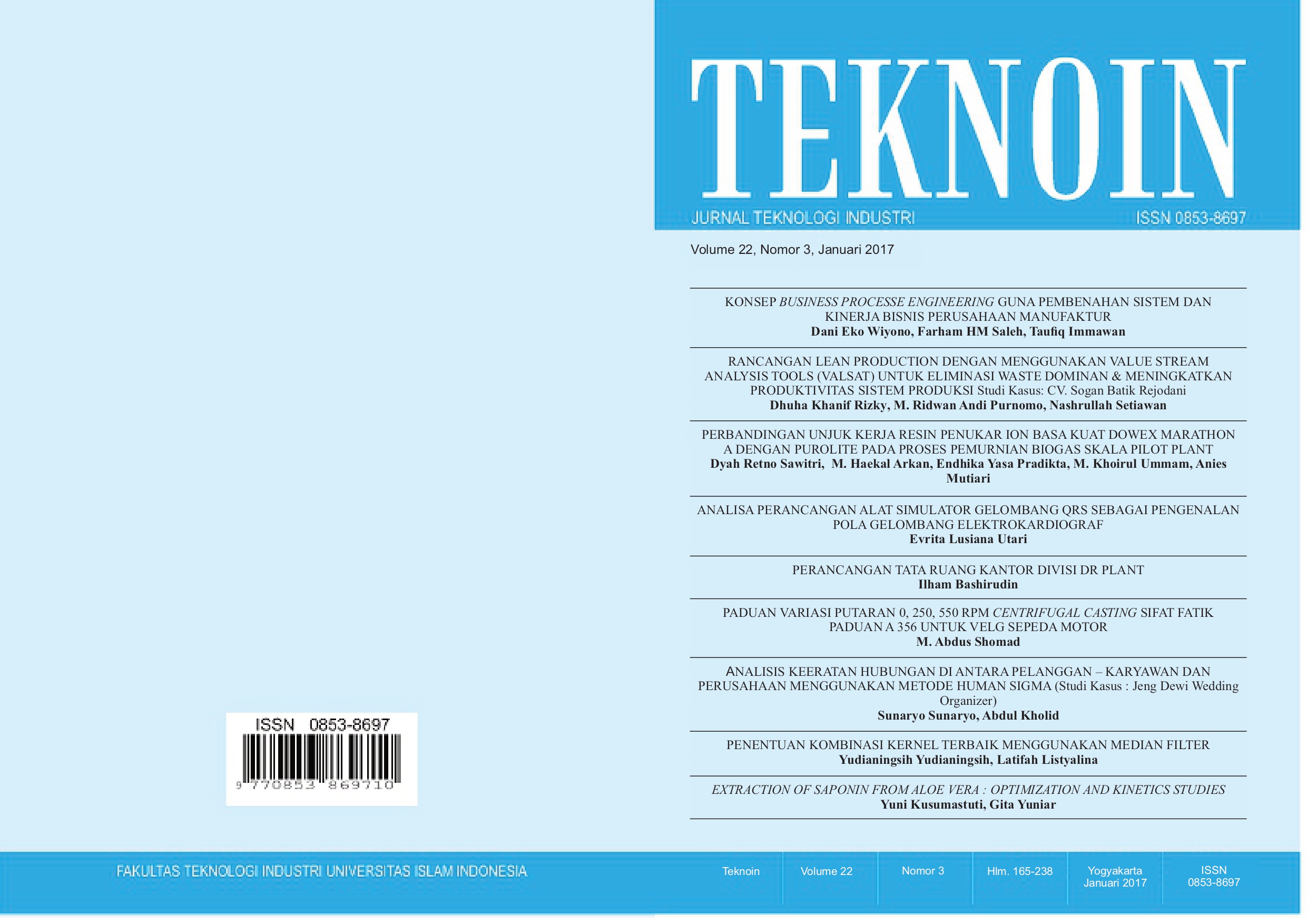Main Article Content
Abstract
With increasing competition in the industry, SMEs are required to be able to do continuous improvement to improve its performance so as to compete with other SMEs and able to apply the concept of lean production. In CV SBR, demand will increase in Ramadan. With the increase in orders, then the CV SBR required to continue to meet customer demand in a timely manner in accordance consumer expectations. This research will try to apply the concept of lean production by using value stream mapping and analysis of waste using the Value Stream Analysis Tools (VALSAT) in order to increase the productivity of the production system in the CV Sogan Batik Rejodani. The purpose of this study is to determine the percentage of Value Added, Non-Value Added, and Necessary but Non-Value Added Activity of batik production system. Furthermore, to determine the design of future state value stream mapping in CV SBR. Obtained results are given in the form of proposed improvements that can reduce the Non-Value Added Activity from 43% to 13%. In addition the draft future state value stream mapping can reduce cycle time from 16115.88 seconds to 15062.96 seconds and can reduce the lead time from 24589,028 seconds to 15932.62 seconds. With the reduction in value-added activity, it can increase the output of the product in a day so that the productivity of the production system increases.
Article Details
License
Authors who publish with this journal agree to the following terms:
- Authors retain copyright and grant the journal right of first publication with the work simultaneously licensed under a Creative Commons Attribution License that allows others to share the work with an acknowledgement of the work's authorship and initial publication in this journal.
- Authors are able to enter into separate, additional contractual arrangements for the non-exclusive distribution of the journal's published version of the work (e.g., post it to an institutional repository or publish it in a book), with an acknowledgement of its initial publication in this journal.
- Authors are permitted and encouraged to post their work online (e.g., in institutional repositories or on their website) prior to and during the submission process, as it can lead to productive exchanges, as well as earlier and greater citation of published work (See The Effect of Open Access).
